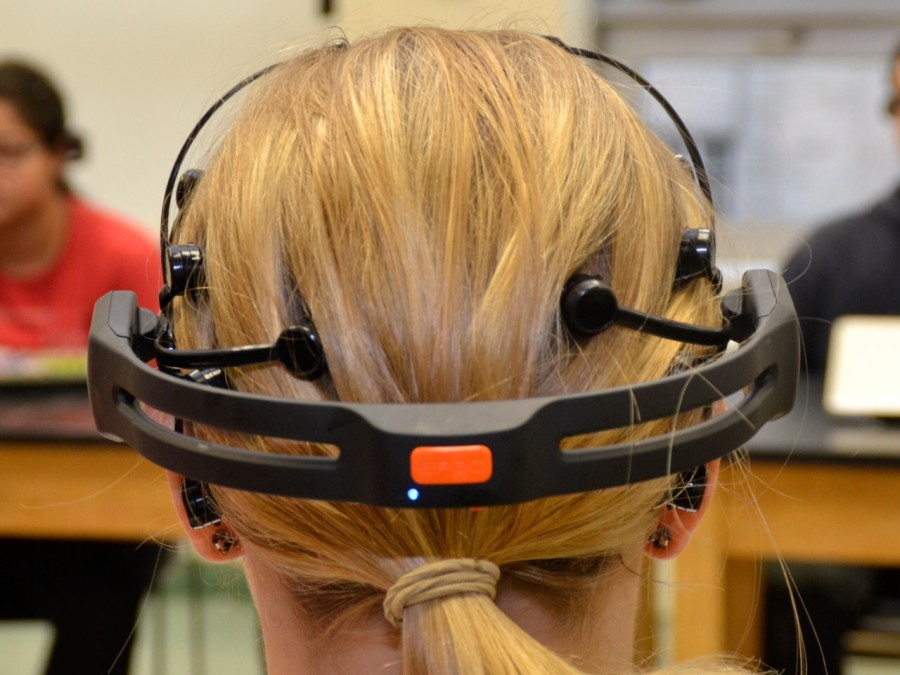Brain wave synchronization enhances classroom learning, NYU study finds
A new study shows that greater brain wave synchronization between students and teachers produces better learning.
A portable electroencephalogram that was used to track brain activity in the NYU study. (Courtesy of Diane Quinn)
April 26, 2023
Students who exhibit the same brain activity patterns as their classmates and instructors, also known as brain-to-brain synchronization, are likely to retain information learned in class, according to a recent study from NYU’s psychology department.
The study, conducted in collaboration with researchers from Harvard University and the University of Connecticut, investigated the relationship between brain wave synchronization and the ability of students to retain information they learn in class. Using a wearable cap, researchers recorded electrical brain activity from nine different groups of four students and a teacher who did not know each other prior to the study.
The researchers brought in two teachers who led four seven-minute-long lectures on biology and chemistry topics for each group in a controlled college classroom setting. Most of the student participants were undergraduates.
Researchers gave students 10 multiple choice questions to complete one week before their lesson, immediately after, and one week after the session. Based on the responses to the tests, and data from the recorded brain activity, the researchers found that students understood class material better when their brain waves were more in sync with those of their classmates and instructor.
Suzanne Dikker, a lead researcher on the study, said that the researchers also investigated the participants’ ability to retain information, which is something that past studies conducted by other institutions did not take into consideration. She called NYU’s study “a missing piece of the puzzle” for understanding the impact of brain wave synchronization on learning.
“Your brain waves are kind of locking to the structure of the speech of the teacher — and so are all the brain waves of all the other students in the classroom,” Dikker said. “Their brain waves are going to lock a little better or more closely to the teacher’s than the other students, who may be distracted, for example.”
Dikker added that the study does not suggest that synchronization is needed for individuals to learn. Rather, by observing brain wave synchronization, researchers may better understand how in-class learning functions as a whole. She also thinks that making lessons more interactive will increase the effectiveness of teaching.
Edgar Coons, a professor of psychology and neural science at NYU, said that researchers can use brain wave measurements to assess what teaching techniques students are most responsive to.
“Brain waves are simply good indicators of what’s going on, but they themselves aren’t the producers of the goodness of learning,” Coons said. “[The study] is the beginning in finding out what the really important factors are in the communication process between teachers and students.”
Contact Graylin Lucas at [email protected].













































































































































